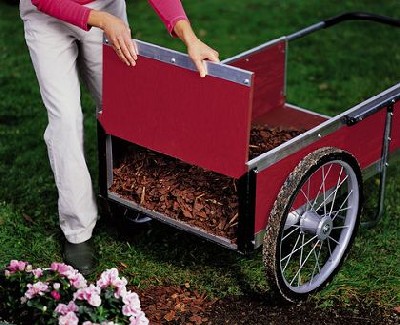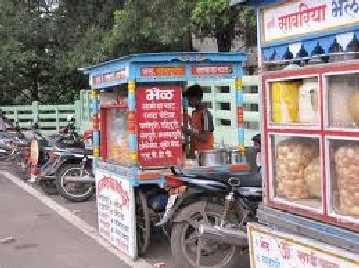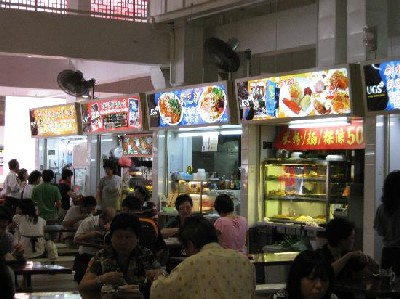 | « Back to article | Print this article |
Here's how you can combine innovation with a social cause
There is good news for Kolkata and maybe, eventually, the rest of urban India too. A report says that a Danish firm has designed a cart for food hawkers -- there are 1.25 lakh of them in the city -- which will enable them to ply their trade in a clean and hygienic way while taking up less space than do today's carts.
Each cart will cost around Rs 60,000 and the Hawker Sangram Samity is looking for support to roll out at least 60 of them from next year as a test drive.
Each cart will hold an oven, gas cylinder, washbasin, garbage bin and display shelf. It will have a steel frame and sport a colourful umbrella on top, like a bandanna.
Most important, it will be on wheels, allowing it to be taken away when needed. If these carts come to be widely used, they will not only help clean up our city roadsides but also make them look much more cheerful. Many variations in colour and design can be imprinted on the umbrellas to visually uplift the roadsides.
Click NEXT to read more...
Here's how you can combine innovation with a social cause
A year ago, while dwelling on the issue of urban hawkers, I had written: "The professional classes – engaged citizens, designers and corporates – should start a national competition for designing a cart for hawkers.
There can be a mother design from which can evolve specialised designs for carts for different wares like food, clothes and soft drinks. There should be storage space below the table-top and colourful awnings on top to give some protection for both hawker and customer from the sun and the rain.
And the carts should be on proper wheels so that at night they can be taken away and parked at a local pound where the wares stored in them are safe and the emptied pavements can be thoroughly cleaned and maybe even washed by the municipal staff."
Click NEXT to read more...
Here's how you can combine innovation with a social cause
Then, a bit earlier this year, I had again written on the same subject: "As hawkers sell clothes, utensils, toys, food, soft drinks, what have you, there can be variations of it [a modular cart] for different uses.
Such carts can actually make the derelict city [Kolkata] look colourful and become a plus point. Next, hawker presence has to be intensively coordinated with civic cleanup work so that hawkers, particularly those selling food, do not create an unhygienic mess. If these carts work then they can be replicated all over the country."
It is a pity that the Danes have stolen a march on us. But there is still time to catch up. After all, since we live with the problem, none can know the animal better than we do. A design that works its way bottom-up (the way all functionally useful designs do) will try to meet specifications that come up from the need for such carts and the use that they are put to.
I do not know how the Danes became interested in the idea, whether someone from India sought their help. But it is well known that as a group, the Nordic countries are among the most socially conscious, not just in the way they order their own lives but the interest they take in development round the world.
Click NEXT to read more...
Here's how you can combine innovation with a social cause
This is combined with an enthusiasm to innovate, which is essentially a capitalist process. Thus, what emerges is a combination of social concerns and capitalist resources.
Food hawkers on Indian urban roads do not lend themselves to cut-and-dried solutions. The middle-class notion is that these people, virtually taking over pavements and sometimes a part of the carriageway too, are a law and order problem.
They are a symbol of the soft Indian state. But cheap, roadside food is all that a lot of urban dwellers can afford. And Kolkata's 350,000 hawkers mean sustenance for over two million people!
A solution must lie in making the whole phenomenon cleaner, so that it is neither a health hazard nor an eyesore. But what is really tough is to ensure that the solution does not add to costs in such a way that cheap cooked food ceases to be cheap.
Click NEXT to read more...
Here's how you can combine innovation with a social cause
Also, the solution must be such that it is not too difficult for the municipal authorities or the police to put in place, given all the limitations they have in terms of resources and their ability to be tough.
Different countries have tackled this problem differently. Singapore long ago regrouped food hawkers in shopping mall food courts and dedicated street-side clusters. Government housing estates all have small food courts. (Singaporeans don't cook much at home.)
And during festival seasons hawkers are allowed to come onto pavements -- but operate out of specially-designed plastic tents which are folded and taken away when the festival is over.
Click NEXT to read more...
Here's how you can combine innovation with a social cause
New York, which is particularly hospitable to street food, has responded to a recent development in its own way.
It has traditionally allowed a degree of freedom to those serving roadside food, because it adds to ethnic diversity and allows trying out new things. But when the whole process got corporatised – high-end food out of trucks – and started competing with rent-paying establishments, then a halt had to be called.
The point is that a solution must emerge locally for which creative individuals backed by NGOs have to develop working models, which officialdom can then be "persuaded" to adopt.






